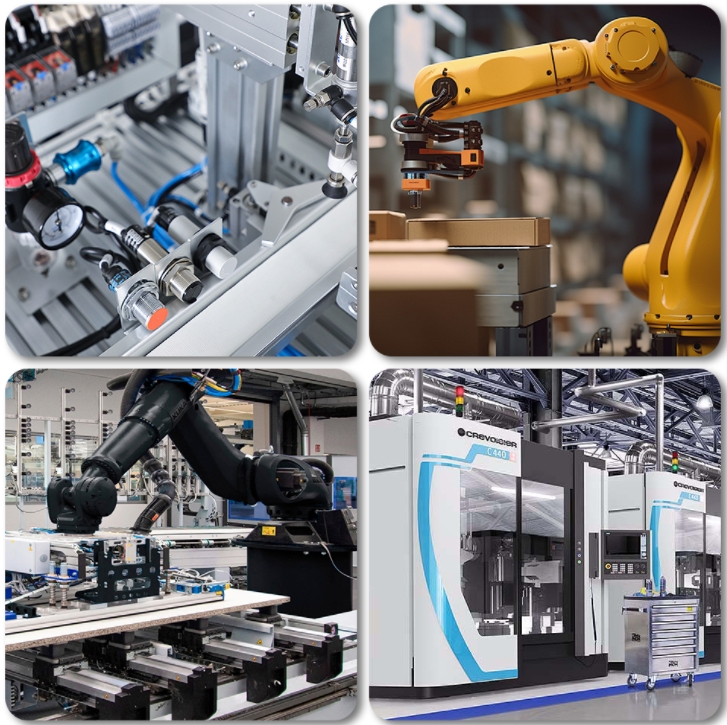Views: 0 Author: Site Editor Publish Time: 2025-07-31 Origin: Site
In the modern industry, the humble hand-operated valve remains an indispensable and reliable performer. Requiring no external power source beyond human effort, these fundamental components provide critical control, isolation, and regulation across countless processes. Their simplicity, robustness, and fail-safe nature ensure their continued relevance in diverse industrial landscapes.
With few moving parts and no reliance on electricity, pneumatics, or hydraulics, hand-operated alves are inherently reliable and easy to understand. This translates to minimal downtime and predictable operation, crucial in demanding environments.
In the event of power loss or control system failure, the position of a hand-operated valve remains unchanged. This is vital for safety isolation (locking out sections of a system) or maintaining a critical flow state.
Lower initial cost, minimal installation complexity (no wiring or external actuators), and reduced maintenance requirements make them economically attractive, especially for applications where frequent adjustment isn't needed.
Operators gain immediate physical feedback on valve position (open, closed, throttling) and can feel resistance, potentially indicating issues like line blockage or excessive torque.
Constructed from robust materials like cast iron, carbon steel, stainless steel, brass, or specialized alloys, they withstand harsh industrial environments – high temperatures, pressures, corrosive fluids, and abrasive media.
Globe valves and needle valves excel at providing precise manual control over flow rates for processes where fine adjustment is needed but constant automation isn't economical (e.g., chemical dosing, sample points, utility water lines, reactor feed control).
Manually controlling flow during initial system commissioning or controlled shutdown sequences.
Ball valves or gate valves at low points in piping systems or equipment for draining liquids (condensate, product, wash water).
Needle valves or small ball valves at high points to manually release trapped air (venting) during system filling or operation.
Isolation for maintenance on pipelines, tanks, wellheads; draining separators; venting; manual control on utility lines (water, air, steam); sample points. Ball valves and gate valves dominate.
Isolation of reactors, vessels, pumps; manual control of reagent feeds or additive streams; draining; sampling. Resistant materials (stainless steel, alloys) are crucial. Plug valves are also common.
Control of steam, compressed air, cooling water, and hydraulic oil supply lines throughout factories; isolation for machine maintenance; draining condensate from air lines.
Isolation for CIP/SIP (Cleaning/Sterilization); manual control on utility lines; sampling. Sanitary ball valves and butterfly valves (often with handwheels) are standard.

Gate Valves: Primarily for ON/OFF isolation. Provides minimal pressure drop when fully open.
Ball Valves: Excellent for quick ON/OFF isolation and moderate throttling. Quarter-turn operation (lever handle).
Globe Valves: Designed for precise flow regulation/throttling. Higher pressure drop.
Butterfly Valves: Used for ON/OFF and throttling in large diameter pipes. Compact, quarter-turn (lever or gearbox).
Plug Valves: Robust ON/OFF or diversion service, often for slurries or corrosive fluids. Quarter-turn.
Needle Valves: For very precise flow control, especially in sampling or instrumentation lines.
Diaphragm Valves: Excellent for slurries or corrosive fluids where leakage is unacceptable. Flow regulated by a handwheel pressing a diaphragm.
Despite the proliferation of automation, hand-operated valves remain the backbone of safe and efficient industrial operations. Their unparalleled combination of simplicity, reliability, fail-safe operation, and cost-effectiveness ensures they will continue to be the go-to solution for critical isolation, essential manual control, draining, venting, and sampling tasks across virtually every industrial sector. From the massive gate valves isolating refinery process units to the small needle valve taking a sample in a pharmaceutical lab, these manually controlled workhorses prove that sometimes, the simplest solution is the most enduring and vital. They are a testament to robust engineering design fulfilling fundamental operational needs.